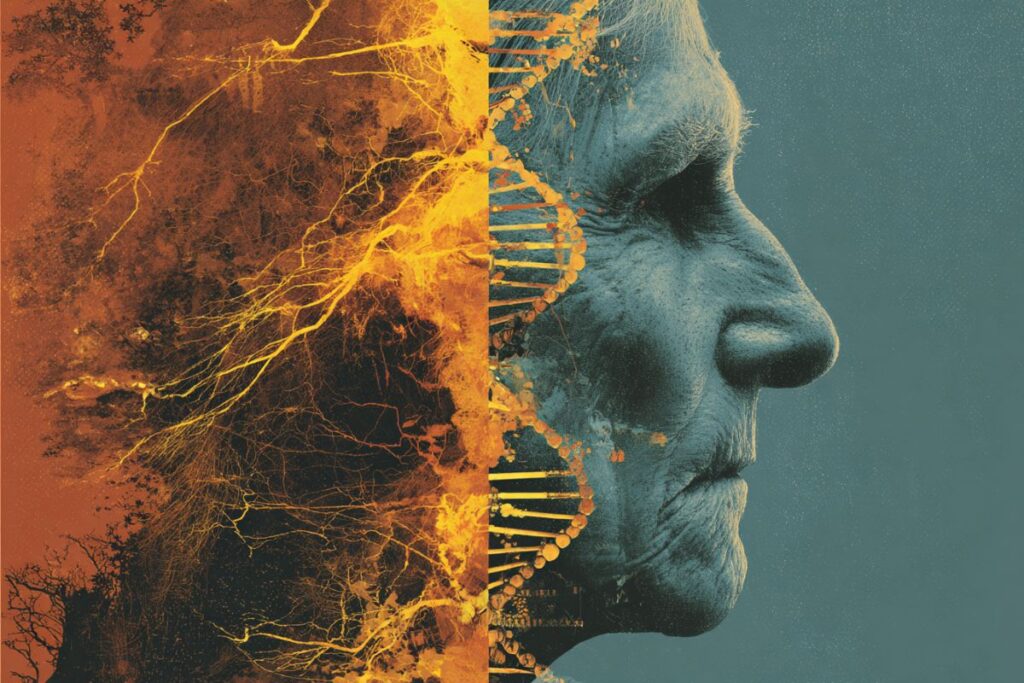
A groundbreaking genetic study has identified over 400 genes linked to various forms of unhealthy aging, ranging from cognitive decline to metabolic issues. Conducted by an international team led by the University of Colorado Boulder, the research highlights that frailty is not a singular condition but comprises multiple subtypes with distinct biological pathways. This discovery provides insight into why some individuals age with resilience while others face disease and decline earlier.
The findings, published in the journal Nature Genetics, suggest that these genetic insights could pave the way for personalized treatments, potentially moving us closer to therapies that address aging at its core. The study’s lead author, Isabelle Foote, emphasizes the importance of understanding the underlying biology to develop treatments aimed at halting or reversing accelerated biological aging.
Gene Discovery and Its Implications
The study identified 408 genes associated with frailty, a significant increase from the 37 previously known. These genes are linked to various subtypes of frailty, including poor cognition, metabolic problems, disability, and social isolation. The research supports the “geroscience hypothesis,” which posits that treating aging itself is essential to addressing the multiple chronic illnesses that accompany it.
Dr. Kenneth Rockwood, a leading expert in frailty and co-author of the study, noted, “Aging is not just one thing. There are many ways to be frail.” The research team conducted a genome-wide association study using DNA and health data from hundreds of thousands of participants in the UK Biobank and other public datasets to identify genes associated with 30 frailty symptoms.
“To be able to identify treatments to stop or reverse accelerated biological aging, you need to know what the underlying biology is,” said Isabelle Foote, first author on the paper.
Redefining Frailty
Frailty, often described as “multisystem physiological decline,” affects over 40% of U.S. adults over age 65. Traditionally, doctors assess frailty using a 30-point index measuring factors like walking speed, grip strength, and social activity. However, this method lacks specificity, as two individuals can have the same frailty score despite differing underlying health issues.
The study’s findings indicate that distinct biological pathways underlie different types of frailty. For instance, the SP1 gene, associated with immune function and Alzheimer’s disease, is linked to poor cognition, while the FTO gene, known for its association with obesity, is connected to multiple categories of unhealthy aging.
“What this paper does is not only identify sub-facets of disordered aging but also demonstrate that there is very different biology underlying them,” said senior author Andrew Grotzinger.
Potential for Targeted Therapies
The research suggests expanding clinical measurements of frailty to include the six identified subtypes. This approach could guide individuals diagnosed with cognitive frailty toward therapies to prevent dementia, while those with metabolic frailty might take steps to prevent diabetes or heart disease.
Foote envisions a future where individuals receive a “polygenic risk score” to gain more detailed insights into their propensity for unhealthy aging. Although a single anti-aging pill is unlikely, the study raises the possibility of developing targeted treatments for specific age-related issues.
“This paper suggests that it’s probably not going to be a single magic pill to address all the diseases that come with aging, but maybe it doesn’t need to be hundreds anymore,” said Grotzinger.
Looking Ahead
This research marks a significant step toward understanding the genetic factors driving unhealthy aging. By identifying the molecular pathways involved, scientists hope to develop therapies that can slow or reverse the aging process. As the field of geroscience continues to evolve, these findings could lead to more effective, personalized interventions for age-related conditions.
The study, “Uncovering the multivariate genetic architecture of frailty with genomic structural equation modeling,” highlights the importance of nuanced models of frailty in understanding its causes and relation to adverse health outcomes. As researchers continue to explore the genetic underpinnings of aging, the potential for improving health outcomes across the aging population grows ever more promising.







